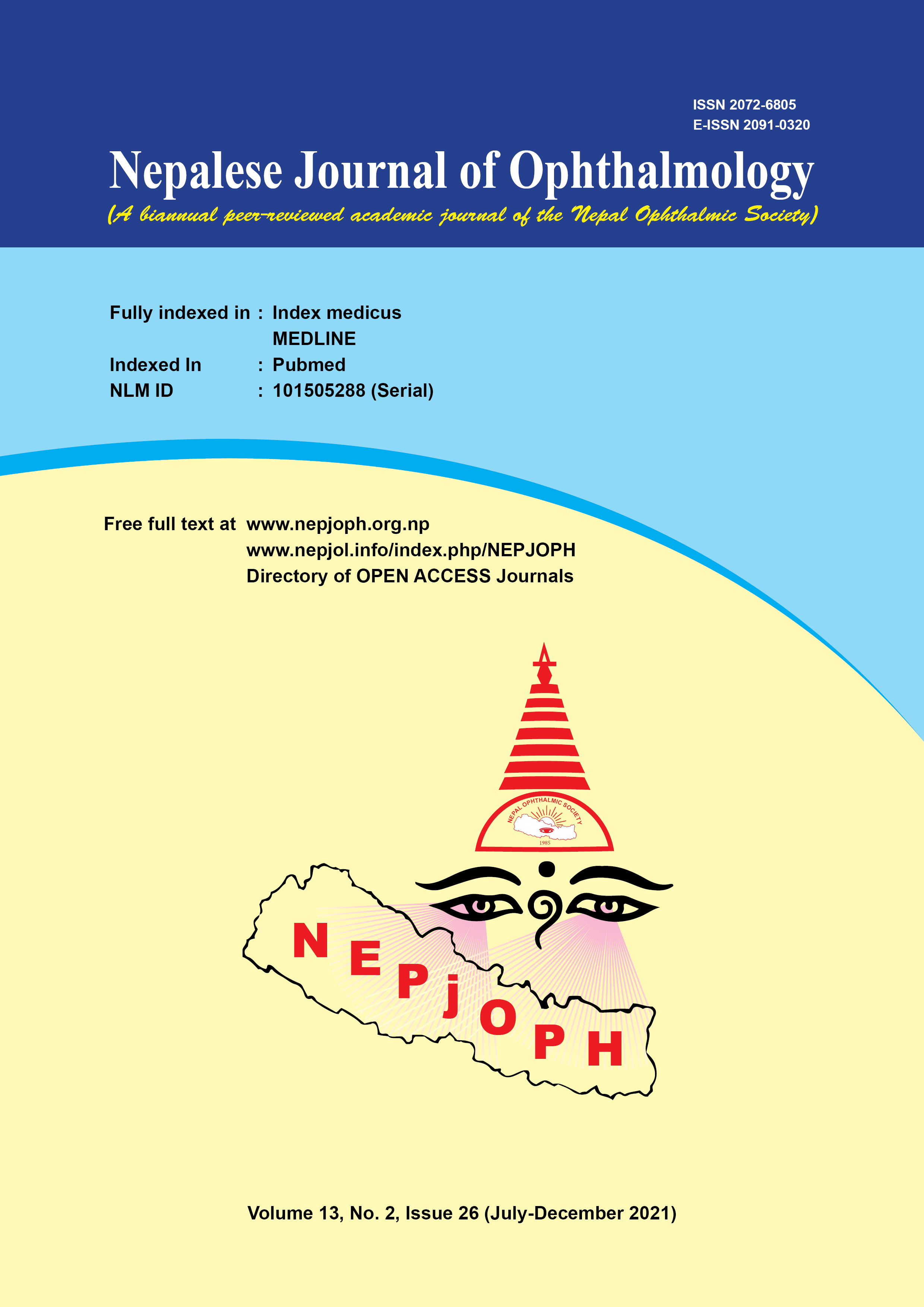Arrugas Bone Trephine Assisted Flapless Dacryocystorhinostomy with Circumosteal – Mitomycin C Versus External Dacryocystorhinostomy: A Hospital Based Comparative Study
DOI:
https://doi.org/10.3126/nepjoph.v13i2.30264Keywords:
Arrugas bone trephine, Circumosteal - Mitomycin C, External Dacryocystorhinostomy, Flapless DCR, Primary acquired nasolacrimal duct obstructionAbstract
Introduction: Primary acquired nasolacrimal duct obstruction is a common ophthalmic condition and has conventionally been managed by external dacryocystorhinostomy. However this procedure is time consuming and involves making mucosal flaps. The aim of this study was to compare the surgical outcome in Arrugas bone trephine-assisted flapless dacryocystorhinostomy with Circumosteal - Mitomycin C versus conventional external dacryocystorhinostomy.
Materials and methods: This is a retrospective non-randomized study of surgical outcome in patients of primary acquired nasolacrimal duct obstruction who underwent an Arrugas bone trephine assisted flapless dacryocystorhinostomy with Circumosteal - Mitomycin C (group A) versus those who underwent conventional external dacryocystorhinostomy (group B) in a teaching hospital in North India. Patients with previously failed dacryocystorhinostomy, lacrimal fistula, canalicular and common canalicular obstruction were excluded. Success was defined as patent syringing at the end of one year. Surgical time was calculated from skin incision to skin suturing.
Results: There was complete resolution of epiphora with patent syringing in 43 out of 52 patients in group A, while in group B, 47 out of 55 patients had complete resolution of epiphora with patent syringing at the end of one year (p= 0.77). Mean surgical time was significantly lower in Group A than in Group B (p=<.05). Scarring and closure of the ostium was the most common cause of failure in both groups (Group A, n=5, 9.6%; Group B, n= 3, 5.45%).
Conclusion: Arrugas bone trephine-assisted flapless dacryocystorhinostomy with Circumosteal - Mitomycin C is a viable alternative to conventional external dacryocystorhinostomy with comparable success rate and shorter surgical time and a faster learning curve.
Downloads
Downloads
Published
How to Cite
Issue
Section
License
Copyright (c) 2021 Nepalese Journal of Ophthalmology

This work is licensed under a Creative Commons Attribution-NonCommercial-NoDerivatives 4.0 International License.
This license enables reusers to copy and distribute the material in any medium or format in unadapted form only, for noncommercial purposes only, and only so long as attribution is given to the creator.




